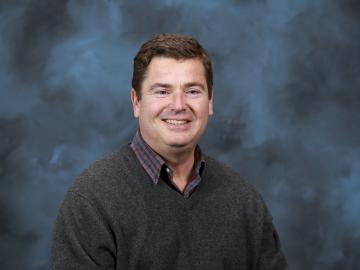Filter News
Area of Research
- (-) Fossil Energy (3)
- (-) Nuclear Systems Modeling, Simulation and Validation (3)
- (-) Transportation Systems (7)
- Advanced Manufacturing (28)
- Biological Systems (16)
- Biology and Environment (72)
- Biology and Soft Matter (1)
- Building Technologies (10)
- Chemical and Engineering Materials (1)
- Chemistry and Physics at Interfaces (4)
- Clean Energy (319)
- Climate and Environmental Systems (6)
- Computational Biology (5)
- Computational Engineering (4)
- Computer Science (14)
- Electricity and Smart Grid (1)
- Energy Frontier Research Centers (7)
- Energy Sciences (4)
- Fuel Cycle Science and Technology (1)
- Functional Materials for Energy (6)
- Fusion and Fission (21)
- Fusion Energy (10)
- Geographic Information Science and Technology (2)
- Isotope Development and Production (2)
- Isotopes (13)
- Materials (279)
- Materials Characterization (2)
- Materials for Computing (23)
- Materials Synthesis from Atoms to Systems (5)
- Materials Under Extremes (5)
- Mathematics (1)
- National Security (32)
- Neutron Data Analysis and Visualization (2)
- Neutron Science (112)
- Nuclear Science and Technology (42)
- Nuclear Systems Technology (1)
- Quantum Condensed Matter (1)
- Quantum information Science (4)
- Reactor Technology (1)
- Renewable Energy (2)
- Sensors and Controls (3)
- Supercomputing (148)
News Type
Media Contacts

Oak Ridge National Laboratory researchers developed and demonstrated algorithm-based controls for a hybrid electric bus that yielded up to 30% energy savings compared with existing controls.

Researchers at Oak Ridge National Laboratory are developing a first-of-a-kind toolkit drawing on video game development software to visualize radiation data.

Nuclear scientists at Oak Ridge National Laboratory have established a Nuclear Quality Assurance-1 program for a software product designed to simulate today’s commercial nuclear reactors – removing a significant barrier for industry adoption of the technology.

Researchers at Oak Ridge National Laboratory proved that a certain class of ionic liquids, when mixed with commercially available oils, can make gears run more efficiently with less noise and better durability.





A 20-kilowatt wireless charging system demonstrated at the Department of Energy’s Oak Ridge National Laboratory has achieved 90 percent efficiency at three times the rate of the plug-in systems commonly used for electric vehicles today. This ability can help acc...

A research demonstration unveiled today at the Department of Energy’s Oak Ridge National Laboratory combines clean energy technologies into a 3D-printed building and vehicle to showcase a new approach to energy use, storage and consumption. The Additive Manufactur...




